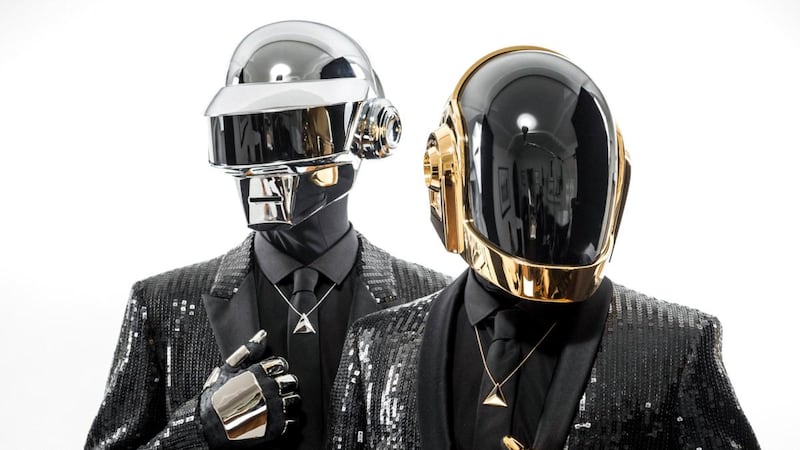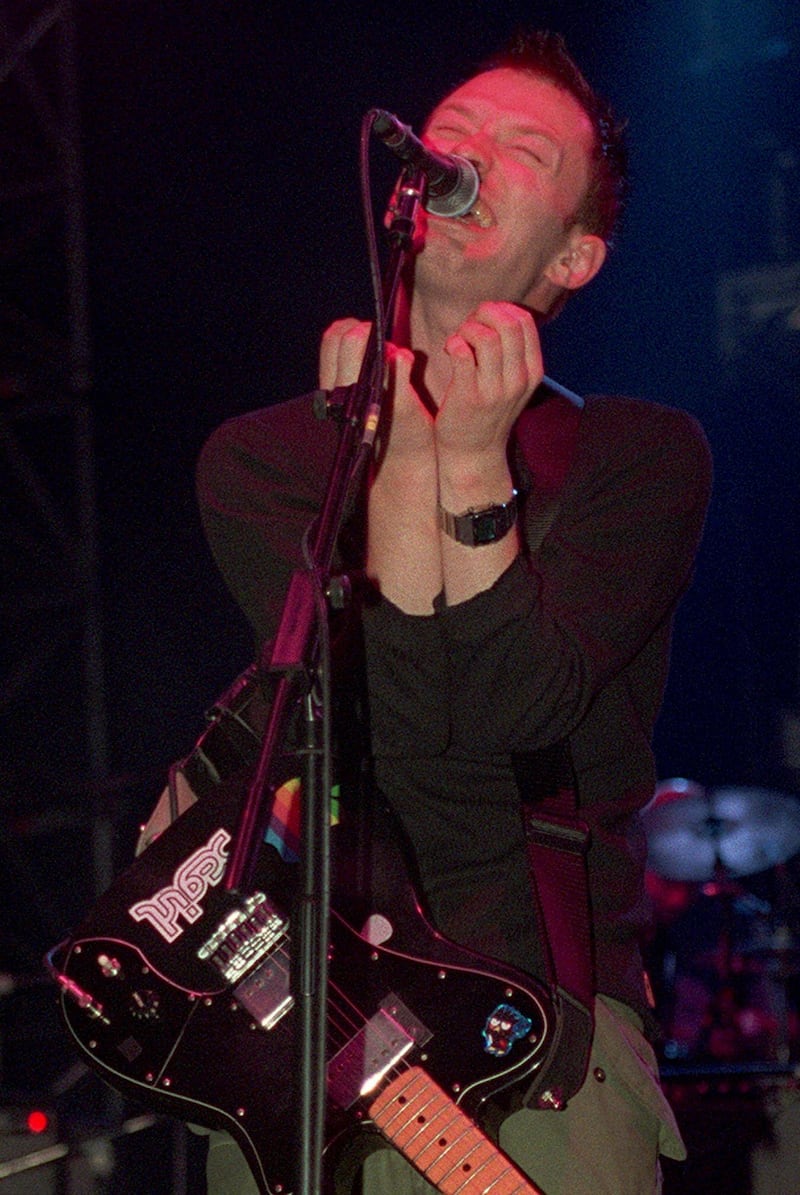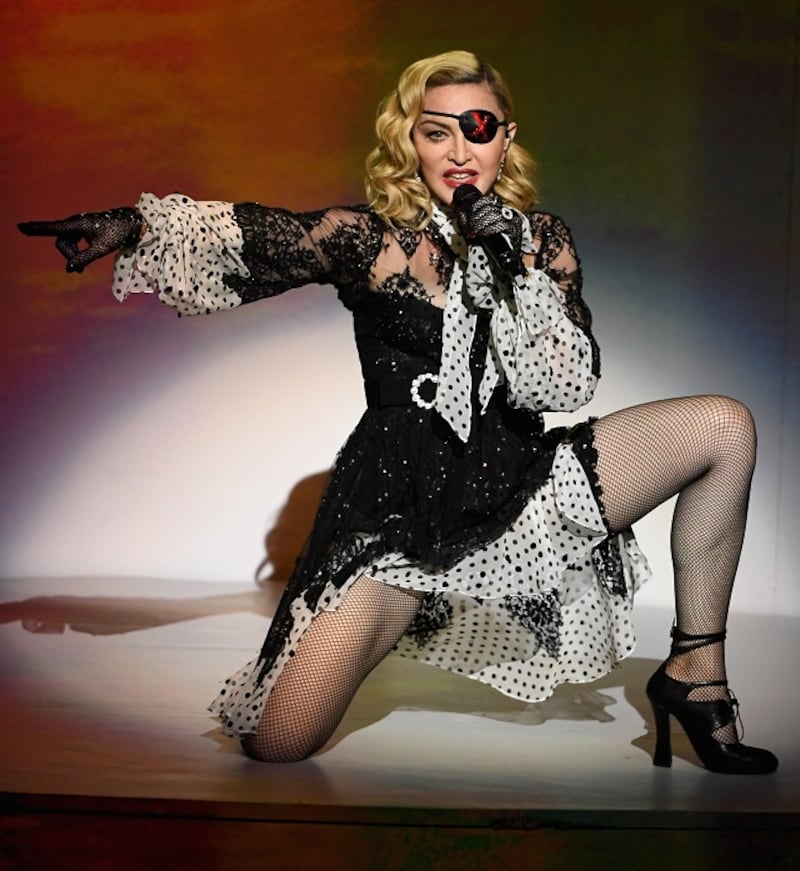What is art about if not breaking free from unremarkable human form? Botticelli envisioned Venus emerging from the sea fully grown. Max Shrek’s face was twisted into a ghostly visage to play the title role in F W Murnau’s Nosferatu. Madonna used auto-tune on her album Madame X to alter the pitch of her vocals into something different. Something superhuman.
The record plays like a straight-up museum piece. The way Madonna digitally manipulates her voice on the edgy high-end pop number Dark Ballet encapsulates the cerebral nature of her approach. Over spotless piano keys and a heavy electronic beat, the singer is a creature transformed. When the vocal effects fray at the edges of lyrics like, “‘Cause your world is such a shame/‘Cause your world’s obsessed with fame’/Cause your world’s in so much pain,” it suggests the erosion of our species’ righteousness, the erasure of our humanity.
Madonna later uses a vocoder to switch into a more discernible retro-futuristic robot voice, programming such lyrics as, “I will not renounce my faith in my sweet Lord”. Then there’s a rendition of Tchaikovsky’s The Nutcracker Suite: Dance of the Reed-Flutes. By uniting sci-fi tech, classical music and ancient scripture, Madonna creates a jarring juxtaposition. Her methodology highlights what using vocal manipulation techniques can achieve in pop performance.

You probably know auto-tune as that much derided software capable of correcting off-key singing. “The Cher effect” is what it was dubbed after the Queen of Comebacks deployed it on her 1998 mega-hit Believe. But when music producers harnessed the technology into one of the defining characteristics of 2000s pop music, lazy listeners cursed it as a kind of shortcut – that is, a cheat code for flawed singers. Guys like T-Pain were an enemy to be cut down as fast as possible. And Jay-Z tried to do just that, releasing the track D.O.A. (Death of Auto-Tune) in 2009.
Jay’s blitzkreig could have been auto-tune’s Disco Demolition Night moment. But auto-tune has never been about artistic cheating.
Vocoders, sonovoxes and auto-tune
Singers manipulate their voices all the time without the use of external forces, contorting their vocal chords to slide into alternate moods and personalities. Less intrusive forms of these special effects come in the form of echoes and delays. A level up from that exists vocoders, sonovoxes and auto-tune. Studio trickery helps achieve things simply not possible for the human voice box.
There's no end to the examples I could pull out of music history: Roger Troutman's talk box vocals transformed the Zapp frontman into a space-aged funkateer. When Peter Frampton used the same tech on Show Me The Way, he sounded like a frontman being supported by android backing singers. Daft Punk transformed themselves into androids to robot rock, rock, rock the house. On the title track of Radiohead's Kid A, Thom Yorke buries his larynx in effects to the point where the lyrics are indecipherable. It sucks the oxygen out of the experimental number. To press play is to enter a windowless room with metal walls with just a sentient machine for company.

Vitally, vocal manipulation is not just skin deep. Software has also given stars the ability to explore themes and feelings beyond the limits of their own unremarkable flesh and bone form.
Auto-tune’s position in the cultural zeitgeist was chrystalised in 2008 when Kanye West dropped his synthpop masterpiece 808s & Heartbreak. Devastated by the simultaneous break-up of a relationship and loss of his mother, West wrestled his sound into a fatalistic realm.
His digitised, artificial voice on the album suggests the dissolvement of his spirit. The vocals are bitter and brutal, air-locked into his sparse electronics. (It’s not enough to simply throw an effect into the mix, the song must service and be serviced by the vocals. So, using auto-tune is no form of artistic swindle. In fact, you’ve got to work incredibly hard to make it work well.)
The best singers can sound warm and comforting. Here, Kanye sounds lost to despair.
Cut to 2018 and I Thought About Killing You, where West airs out thoughts of ending not just his own life but that of another unidentified person. The pitch of his speech warbles like it’s being balanced on a rickety old wooden box. Adding auto-tune again chills the mood. What better way to suggest our personal decay then to fold our voices into something synthetic? His tweaked vocals are one of the defining sounds of a decade of pop.

Androgrynous
Computerised techniques are ideal for reinventing vocalists as automated beings and intergalactic aliens, but that’s not their sole purpose. Just consider Prince, that funky mage who famously declared “I’m not a woman/I’m not a man/I am something that you’ll never understand”. Part of his dedication to non-conformity with gender stereotypes was to explore ideas of masculinity and femininity, and he used technology to do it.
Unsatisfied with what he could pursue in his male form, Prince dreamed up Camille in the mid-1980s, assuming the identity of this woman alter ego by manipulating his vocals into an androgynous style. It wasn’t exactly a complete transformation – Camille pretty much sounds like Prince with his voice sped-up. But no matter, it unlocked a new realm of his writing and performance.
Take If I Was Your Girlfriend, which finds Camille desperately pleading to a would-be lover. Or Strange Relationship, a depiction of a fraturing bond. An album titled Camille was close to being released in 1986 before The Purple One scrapped the project and instead incorporated a bunch of the tracks into his opus Sign o’ the Times.

Then there’s the song Bob George, which sees Prince take up the role of a maniac who barricades himself in a house with a woman. Slowing his voice into a deeper baritone, he become this gun-wielding psychopath who dismisses Prince himself as “that skinny motherfucker with the high voice”. The song can be interpreted as a kick-back to the emerging gangster rap genre – even the minimalist drum machine kicks that underpin the instrumental are reminiscent of something LL Cool J or NWA would have jumped on. To slide into the persona, Prince tunes his voice into an ultra-deep role, reflecting rap’s hyper-masculinity.
There’s an irony to artists using voice-editing techniques on songs like Bob George, a grim depiction of the human race’s grottiest, most violent tendencies. Studio wizardry, such as auto-tune, promises to perfect the imprecise nature of performing music, yet it is often used to lay out the flaws of being human. The substandard nature of this thing called life.
Sometimes, we have to explore technology to truly find out humanity. Madonna, like so many before her, knew it to be true: fortune favours those who dare to dream outside their own skin. To denigrate these tools is to rebuff music’s drive to force us outside the borders of our existence.











